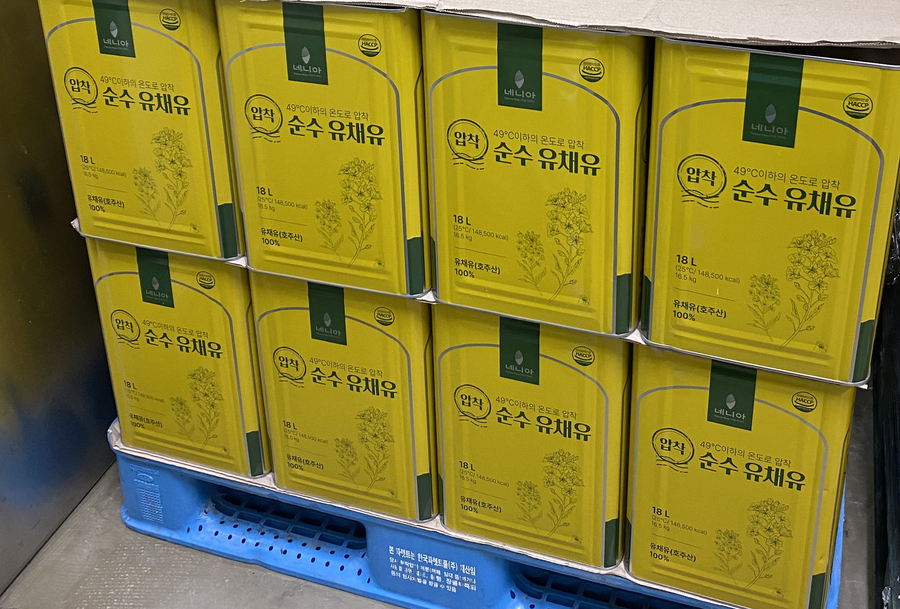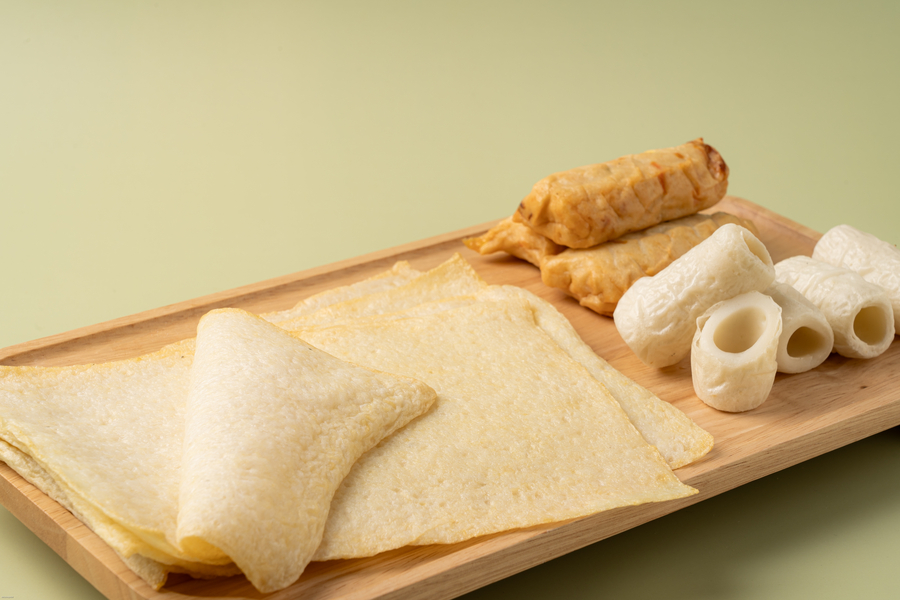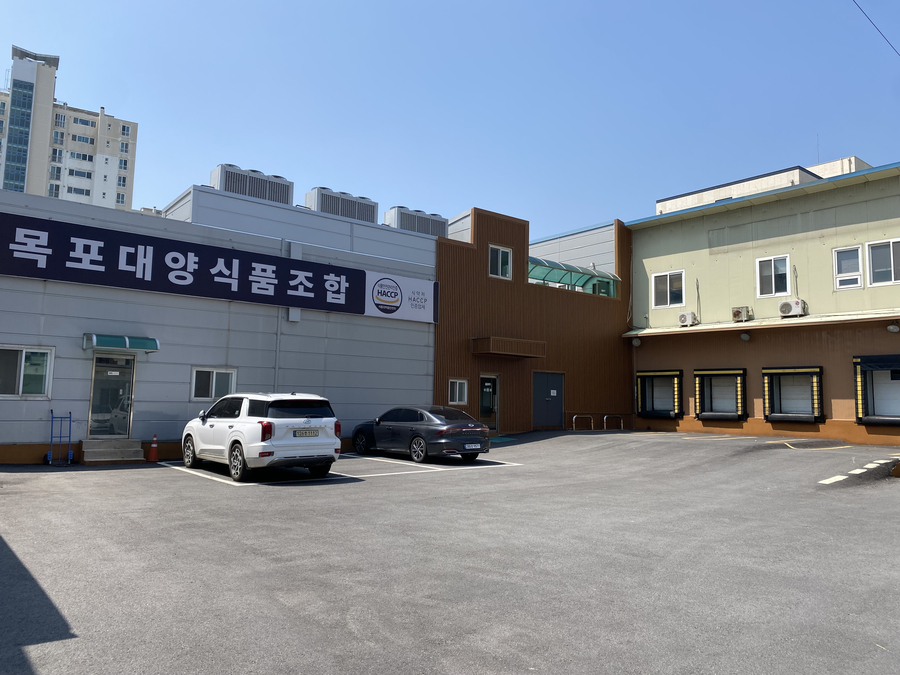Webzine
A Fish Cake Factory Preserving 50 Years of Tradition
2025.11.05[Tracing the Origins of Nenia’s Products – Mokpo Dae-yang Food Cooperative]
“High fish content, no synthetic additives”
Premium fish cakes fried in pressed canola oil
Whose “Deokja” Is It, Anyway?
From June to August, it’s the season of croaker and “deokja” (also called “deokdae”) in Mokpo. “Deokja” — is that someone’s child’s name? Hardly. In Mokpo, croaker sashimi and braised deokja are summertime delicacies. Deokja refers to a large fish resembling a butterfish, also known as deokdae. Mokpo is also famous for octopus, which locals say tastes best in autumn. There’s even a saying among Mokpo residents:
“Mokpo’s food is so good, franchise restaurants can’t survive here.”
Mokpo marks the terminus of the Honam KTX line, and its surrounding counties — such as Shinan and Haenam — form part of its greater living area. The nearby region is dotted with islands like Amtae-do, Jaeun-do, Haeui-do, and Bigeum-do, where seafood abounds. Naturally, with such access to the sea, fish cake factories began to appear in Mokpo.
Fish cakes are a side dish loved by both children and adults. In spring and summer, they’re stir-fried or grilled with seasonal vegetables like onion or garlic chives; in autumn and winter, a warm bowl of fish cake soup soothes the body. And of course, fish cakes and tteokbokki are inseparable companions.
The Nenia Web Magazine Editorial Team visited Mokpo Dae-yang Food Cooperative, where Nenia’s fish cakes are produced, to learn about the factory’s history and production process.
At the site, we were guided by Production Team Manager Mok Bo-gyun, while CEO Kim Sang-gu shared the story behind five decades of dedication to making fish cakes.
A Fish Cake Factory Preserving 50 Years of Tradition
In Mokpo, a port city alive with flavor and the breath of the sea, stands a fish cake factory that has kept its doors open for over half a century — the Mokpo Dae-yang Food Cooperative.
It’s here that Nenia’s fish cakes are born.
The factory was founded in 1979 by the current owner’s father and is now run by his son, CEO Kim Sang-gu. Back when Mokpo’s seas were teeming with fish, small-scale family fish cake makers came together, encouraged by the city government, to form a cooperative — and thus, Mokpo Dae-yang Food Cooperative was established. Today, the factory operates with 15 employees, maintaining a solid annual revenue of 3 billion KRW, continuing the proud legacy of quality fish cake production.

△ Kim Sang-gu, CEO of Mokpo Dae-yang Food Cooperative
“Eomuk,” or fish cake, is a food made by mincing fish meat and mixing it with ingredients such as salt and starch, then cooking it until it sets like a firm jelly. Typically, fish cake factories don’t grind fish for every single production batch. Instead, they produce large quantities of surimi (refined fish paste), freeze it, and use only as much as needed each time. This is because raw fish spoils easily. In most cases, the facilities that process raw fish and those that produce fish cakes are operated separately.

△ Frozen surimi stored in the cold storage of Mokpo Dae-yang Food Cooperative (Photo: Nenia)
The process begins with washing the fish, then pressing it to separate the flesh from bones. The bones, scales, and skin are removed. The fish meat is then rinsed two to three times in water to remove blood and oil, followed by dehydration. Usually, at this stage, chemical additives such as sorbitol and phosphates are mixed in before freezing. Phosphates act as a protein binder and help prevent moisture loss. Sorbitol functions as a stabilizer, preventing protein denaturation.
However, the surimi used in Nenia’s fish cakes is completely free of such additives.
Once the fish has been processed, the factory takes the frozen surimi and mixes it with flour and other ingredients to produce the final fish cakes. There are several varieties — fried, grilled, and steamed fish cakes — and shapes include squares, balls, and sticks. The simplified steps of secondary processing are as follows: ingredient preparation → surimi thawing and washing → mixing → resting → shaping → heat processing (frying, steaming, grilling) → cooling.
High Surimi Content,
No Sorbitol, No Phosphates, No Flavor Enhancers
<Nenia Our Sea Fish Cake> contains a remarkable 74.2% surimi (refined fish paste), giving it a rich, authentic seafood flavor. Made with plenty of real fish meat, the taste of the fish cake stands out naturally. Because the surimi is made from hairtail fish caught in Korean coastal waters, it retains the fish’s natural hue, giving the product a slightly grayish color. Some producers might add artificial additives to achieve a bright yellow tone, but Nenia stays true to its principle of never using synthetic chemical additives. Many manufacturers use phosphates to create a chewy texture, but Nenia achieves the same effect using fructo-oligosaccharides, ensuring a pleasantly firm bite without compromising naturalness.

△ Fish cake soup made with <Nenia Our Sea Fish Cake> (Photo: Nenia)
To make Nenia’s fish cakes, Mokpo Dae-yang Food Cooperative takes an extra step: they purchase domestically caught fish directly, send them to a designated fish processing facility, and have special “Nenia-only surimi” made — free from any chemical additives. The surimi is stored frozen, and when Nenia places a production order, it is freshly processed and delivered as a fresh ingredient for each batch.
Premium Fish Cake Fried in Pressed Canola Oil
One of the most distinctive features of Nenia’s fish cakes lies in the oil used for frying. Nenia uses pressed canola oil that it imports directly from Australia. When oil exceeds its smoke point, it begins to emit smoke, destroying nutrients and producing harmful substances such as acrolein. To ensure safe and clean production, Nenia uses canola oil with a high smoke point (around 230°C), making it ideal for high-temperature cooking such as frying or sautéing.

△ Nenia canola oil on the production line at Mokpo Dae-yang Food Cooperative. Nenia’s fish cakes are fried in premium canola oil, giving them a clean, light flavor. (Photo: Nenia)
The Making of Nenia Canola Oil
Nenia canola oil is pressed at temperatures below 49°C. Unlike ordinary unrefined pressed oils, it undergoes a two-stage filtering and refining process. In the first stage, carried out in Australia, the pressed oil is purified through degumming, bleaching, and deodorizing — a safe process that does not use defoaming agents or fumigation chemicals. In the second stage, completed in Korea, the Australian oil is mechanically filtered again through a 100-mesh (0.1 mm) nylon filter, removing even the finest trace particles.
After this two-step filtration, Nenia canola oil contains very few impurities, with phospholipids and micro-particles (which can accelerate oxidation) thoroughly eliminated. This enhanced refining process also raises the oil’s smoke point, making it more stable for high-temperature cooking. Nenia canola oil maintains a stable smoke point between 220°C and 230°C, and in some tests, it reached around 250°C.
The <Nenia Our Sea Fish Cake>, made with 74.2% domestic surimi, becomes even more special when paired with this pure, carefully refined canola oil. The combination yields a fish cake that’s both clean-tasting and exceptionally high in quality — one that truly deserves its reputation as a premium product.
The King of Fish Cakes: New Pollock Fish Cake Line
As a new venture, Nenia is launching a pollock-based fish cake starting from the second semester of this year. Under the name “Nenia White Fish Cake,” the new product line includes fried, grilled, and hot bar-style varieties. Like all Nenia products, the pollock fish cakes are made using Nenia’s signature pressed canola oil, ensuring the same level of safety, purity, and natural flavor.

△ The newly launched Nenia White Fish Cake is a premium product made with a high content of pollock surimi. (Photo: Nenia)
The surimi content of each product is as follows: <Nenia White Grilled Fish Cake> – 76.92%; <Nenia White Fish Cake (Square)> – 75.78%; <Nenia White Mini Hot Bar> – 72.36%. Pollock fish cakes offer a clean, delicate taste with virtually no fishy odor. However, pollock is a temperature-sensitive fish, and once handled, its elasticity quickly decreases. Most producers compensate for this by adding phosphates, which act as protein binders and help prevent moisture loss. Nenia’s pollock fish cakes, however, are made without any such additives.
While most fish cakes are made by thawing surimi below 4°C before use, pollock surimi cannot be thawed in this way. Instead, it is used while still frozen, being crushed and directly placed into the mixer. CEO Kim Sang-gu explains: “Even for skilled technicians, kneading pollock is a difficult process — but that’s precisely why pollock fish cakes have such an exceptional flavor.”

△ Grilled fish cakes are slowly cooked over an open gas flame. They take longer to make than fried fish cakes. (Photo: Mokpo Dae-yang Food Cooperative)
Among Nenia’s pollock fish cakes, the grilled type is particularly distinctive. It has a hollow cylindrical shape and is slowly roasted over an open gas flame, rolled continuously to ensure even cooking. This stage — the forming and roasting process before cooling — takes 20 to 30 minutes on its own. The result is a light, clean-tasting fish cake that’s never deep-fried or greasy.
The <Nenia White Mini Hot Bar> comes without skewers, a thoughtful decision made to reduce waste and improve safety.
Pollock meat itself is naturally clean and pure, giving both the grilled and fried fish cakes a beautiful color without artificial additives. In assessing fish cake quality, one key measure is gel strength, which indicates firmness and elasticity — the higher the gel strength, the more satisfying the texture. Pollock is known as a species with high gel strength, making it ideal for producing firm yet tender, high-quality fish cakes.
Because there is no domestic supply of pollock surimi that meets Nenia’s manufacturing standards, Mokpo Dae-yang Food Cooperative must inevitably rely on imported raw materials for Nenia’s pollock fish cakes. Currently, no Korean company operates pollock-fishing vessels, and the quantity of pollock caught locally is insufficient for fish cake production. As a result, sourcing domestic pollock surimi is not feasible. The fish used in Nenia’s pollock fish cakes come from Alaska, where they are processed directly on the fishing vessels, ensuring exceptional freshness and quality.
The Challenges of Running a Factory
Fish cake manufacturing facilities are required by law to comply with HACCP (Hazard Analysis Critical Control Point) standards. Mokpo Dae-yang Food Cooperative places great emphasis on on-site hygiene and cleanliness. The packaging area is air-conditioned year-round to maintain low humidity, preventing the growth of mold and bacteria.
CEO Kim Sang-gu notes that one of the greatest challenges in producing fish cakes today is the absence of local fish-processing plants in Mokpo. In the past, when marine resources were plentiful, most Korean fish cake producers used domestic raw materials, he explains. Back then, this region had many surimi-processing factories. During winter, when the fish were at their best, we could process them fresh — yielding plump, flavorful meat. But now, after fishing vessel reductions and other changes, those facilities are gone. It’s a real loss to have to bring in materials from elsewhere.

△ View of the Mokpo Dae-yang Food Cooperative factory (Photo: Nenia)
Kim adds: “A new government has taken office, and it’s important that eco-friendly farmers survive — and that eco-friendly food companies like Nenia can continue to thrive.” He also emphasizes the consumer’s right to know, criticizing policies that prohibit ‘Non-GMO’ labeling on food products. Additionally, he points out that in the past, a product could only be labeled “fish cake” if it contained more than 50% fish meat, but that regulation has since been relaxed, allowing lower ratios and voluntary labeling — something he finds regrettable.
In the Heat of Summer — Labor and Respect

At Mokpo Dae-yang Food Cooperative, what inspires the most trust is not automated machinery, but decades of craftsmanship and accumulated know-how. The facility, certified under HACCP standards, is meticulously managed for dehumidification and cleanliness every day. Because no synthetic additives are used, Nenia’s fish cakes have a shelf life of only 11 days and are treated as fresh products. Nenia places orders only after receiving customer requests, producing and shipping twice a week. Every step reflects the company’s unwavering commitment to delivering “real fish cakes” to schools and households alike.
Producing such products requires immense human effort. The frying process, in particular, takes place under extreme heat — in midsummer, the temperature in the factory can reach up to 50°C.
Production Team Manager Mok Bo-gyun, who has worked at the cooperative since 1998, is now in his 28th year. His experience is so deep that he can assess the condition of the product by touch alone, even with his eyes closed. The dedication of CEO Kim Sang-gu, Manager Mok, and the many workers who produce and package Nenia’s fish cakes by hand gives true meaning to the word craftsmanship. If we eat these fish cakes with gratitude for the people behind them, the bond between producers and consumers will only grow stronger.
Nenia Web Magazine Editorial Team
August 7, 2025








